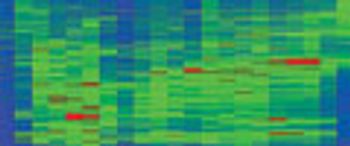
Special Issues
Spectroscopy columnist Ken Busch once again brings readers his comprehensive list of common acronyms used in the field of mass spectrometry.

Special Issues
Spectroscopy columnist Ken Busch once again brings readers his comprehensive list of common acronyms used in the field of mass spectrometry.

Special Issues
Ultrahigh performance liquid chromatography (LC)–time-of-flight mass spectrometry –(TOF-MS) and gas chromatography (GC)–TOF-MS are powerful approaches for screening target compounds and identifying or characterizing nontarget compounds in complex mixtures. The combination of accurate mass data and newly developed software enables truly generic screening methods with TOF-MS, and the confident detection, identification, and confirmation of small molecules in a range of application areas.

Special Issues
Enabling targeted quantitative proteomics applications and hypothesis-driven inquiries will help researchers to understand how proteins function in living systems. The discovery and validation of small molecule and protein-based biomarkers, and the eventual translation of these discoveries from the research lab to the clinic, involves robust mass spectrometry (MS) systems and software that make it easier for technicians to perform routine sample analyses on liquid chromatography (LC)–MS-MS systems, which continue to be used in an increasing number of both protein and small molecule analysis applications.

Special Issues
This article demonstrates the improved robustness of a liquid chromatography–tandem mass spectrometry assay achieved by utilizing the combined selectivity of high-field asymmetric waveform ion mobility spectrometry and highly selective reaction monitoring.

Special Issues
Serum protein profiling using mass spectrometry (MS) is one of the most promising approaches for biomarker identification.

Special Issues
Mass spectrometry has long been a preferred tool for protein identification and biomarker discovery, but preparation of biological samples remains a challenge. Hindrances include the wide range of protein concentrations, sample complexity, and loss or alteration of important proteins due to sample handling. This article describes recent developments in sample fractionation technologies that are overcoming these challenges in interesting ways and are enabling in-depth proteomic studies that were not possible in the past.